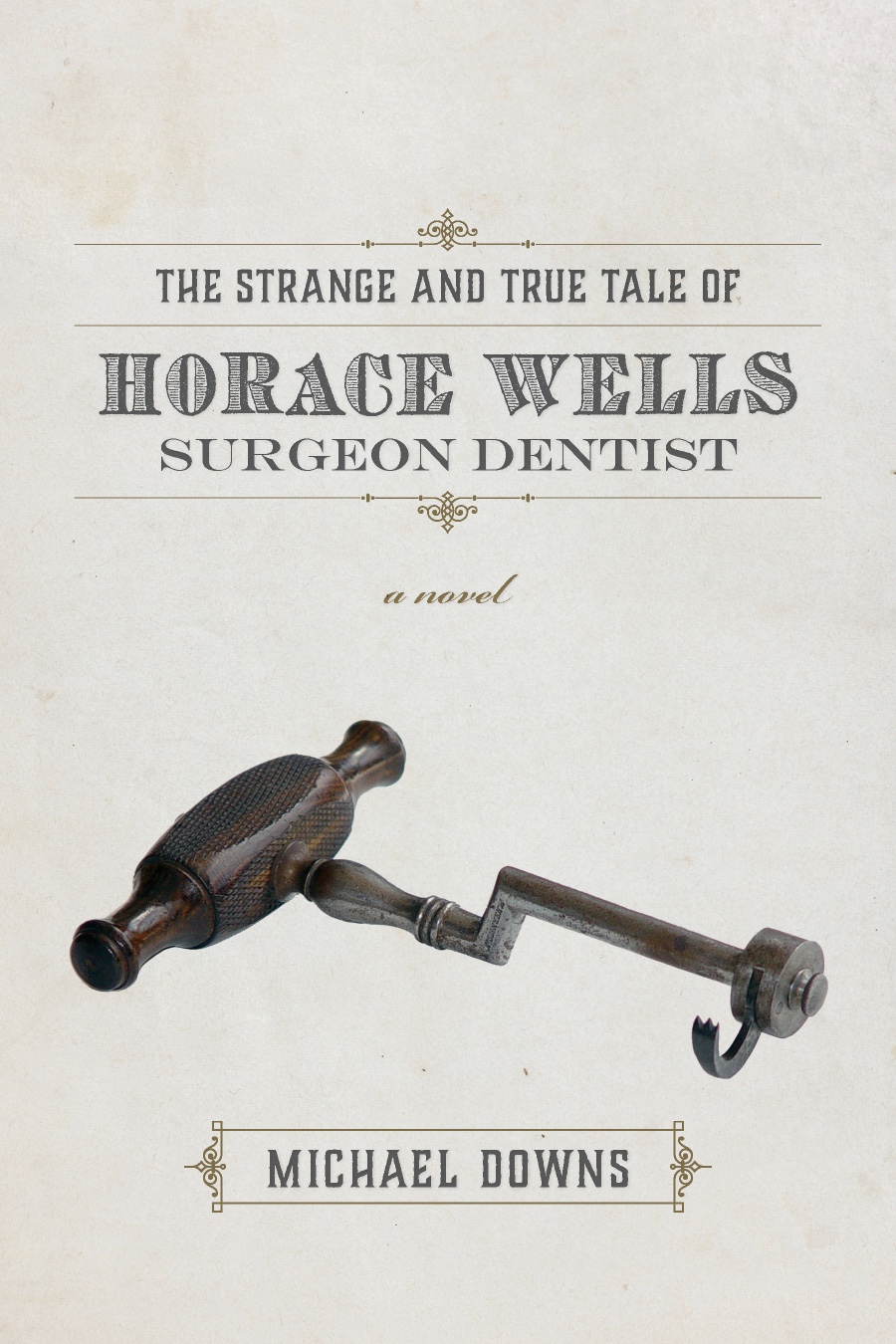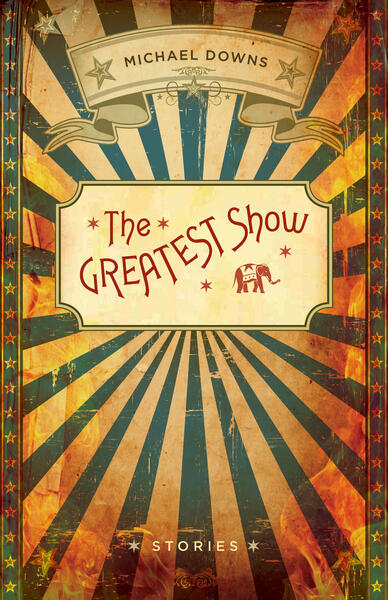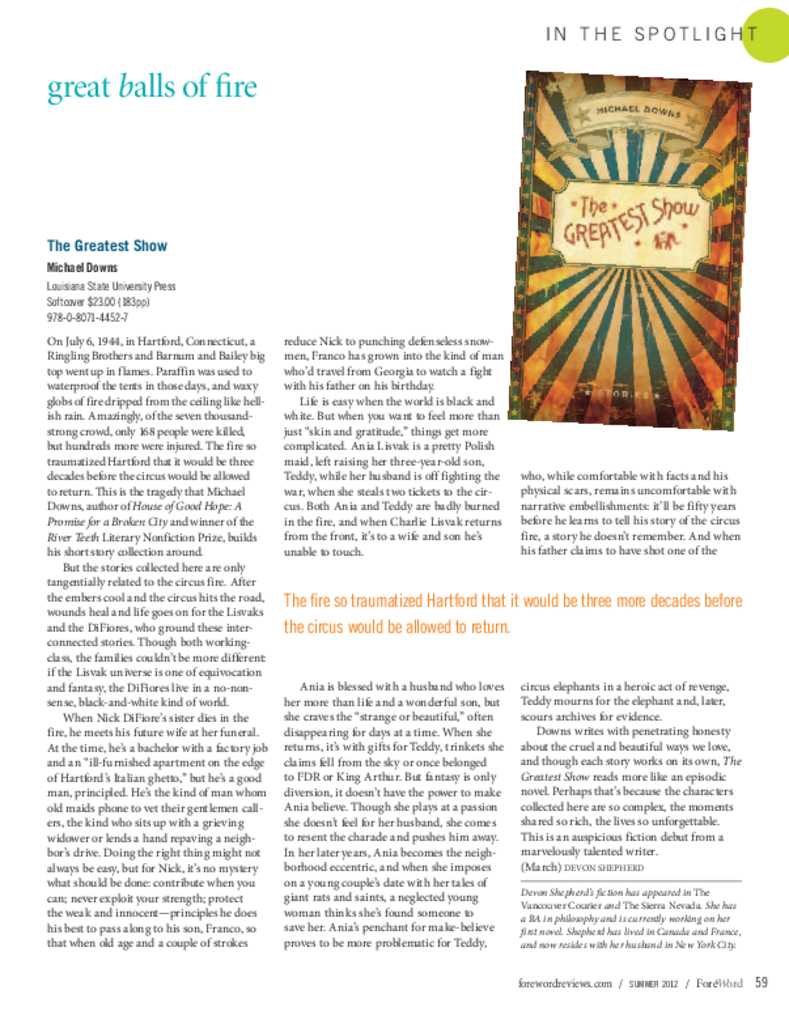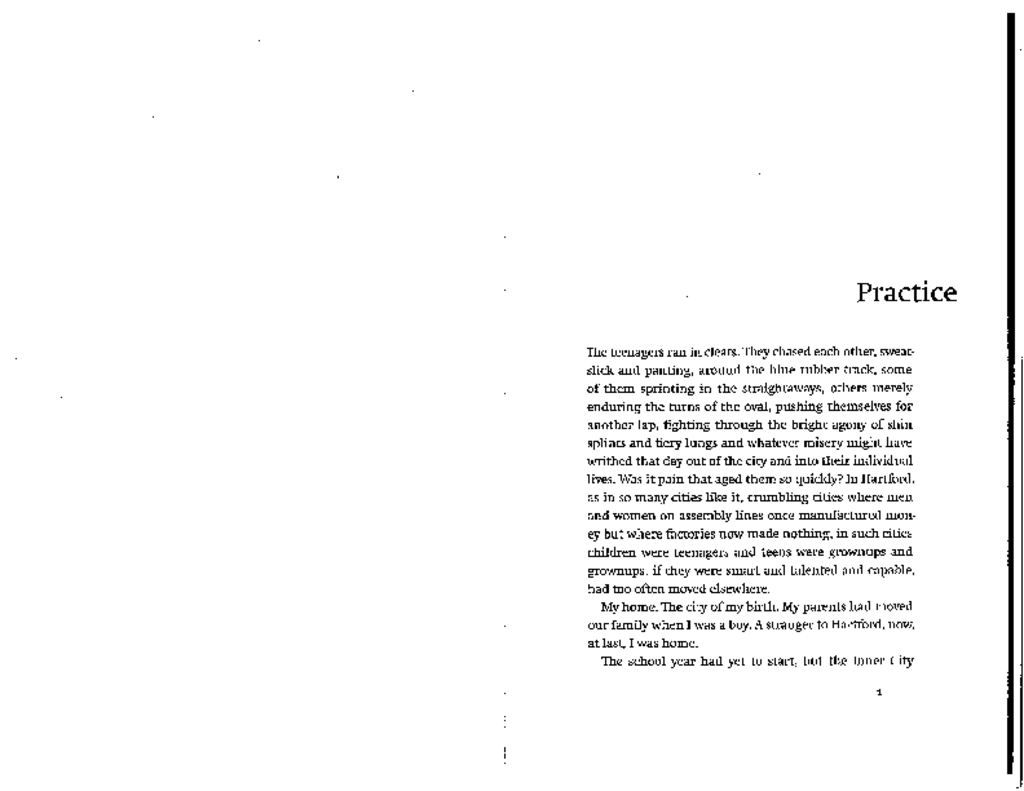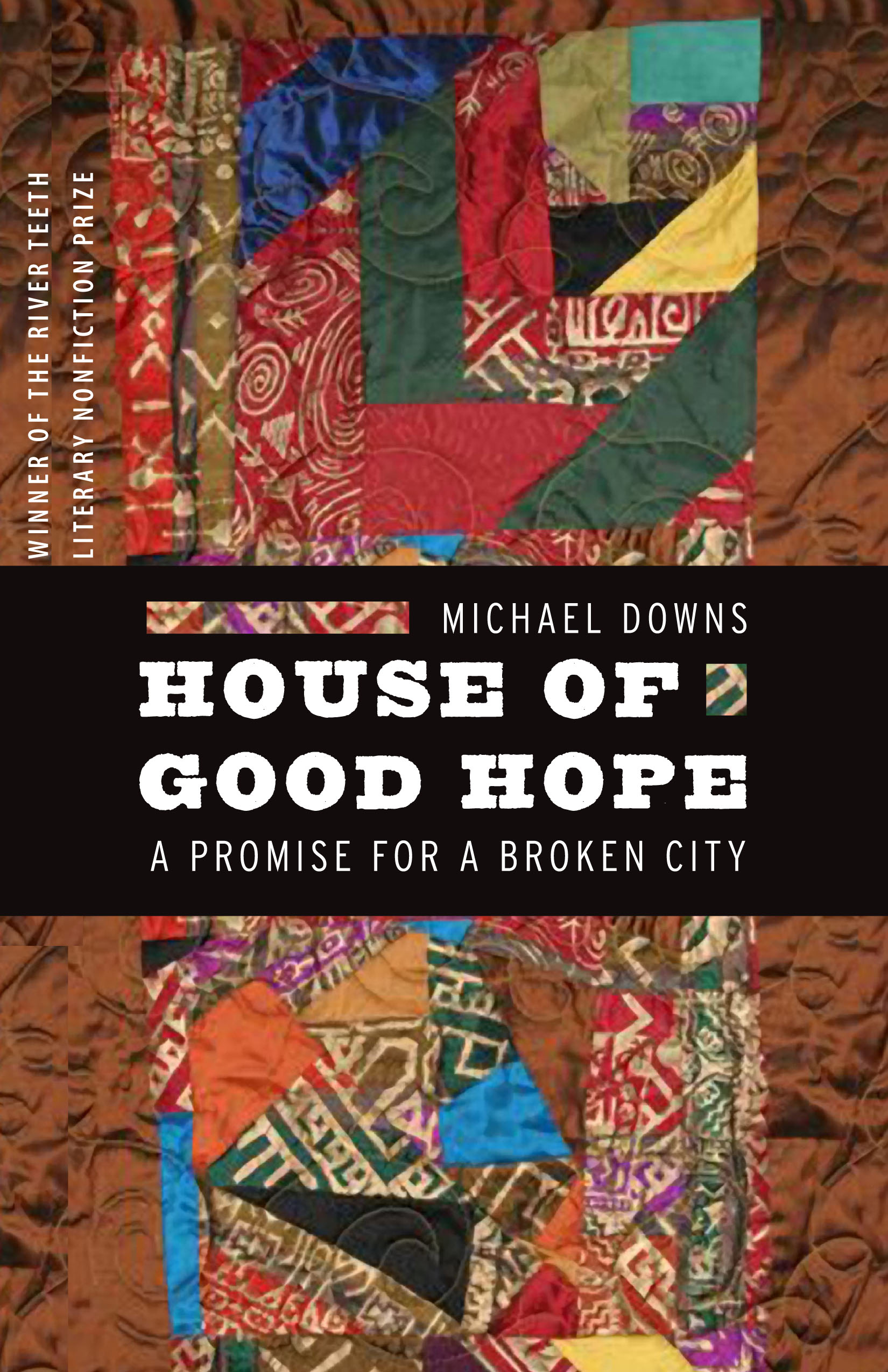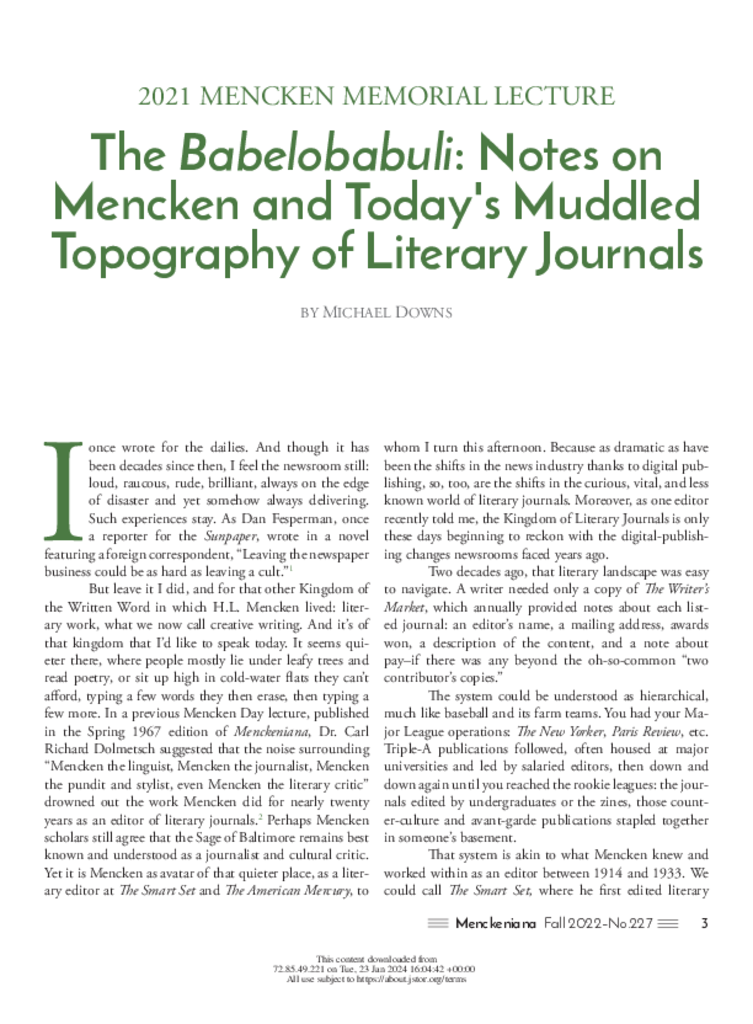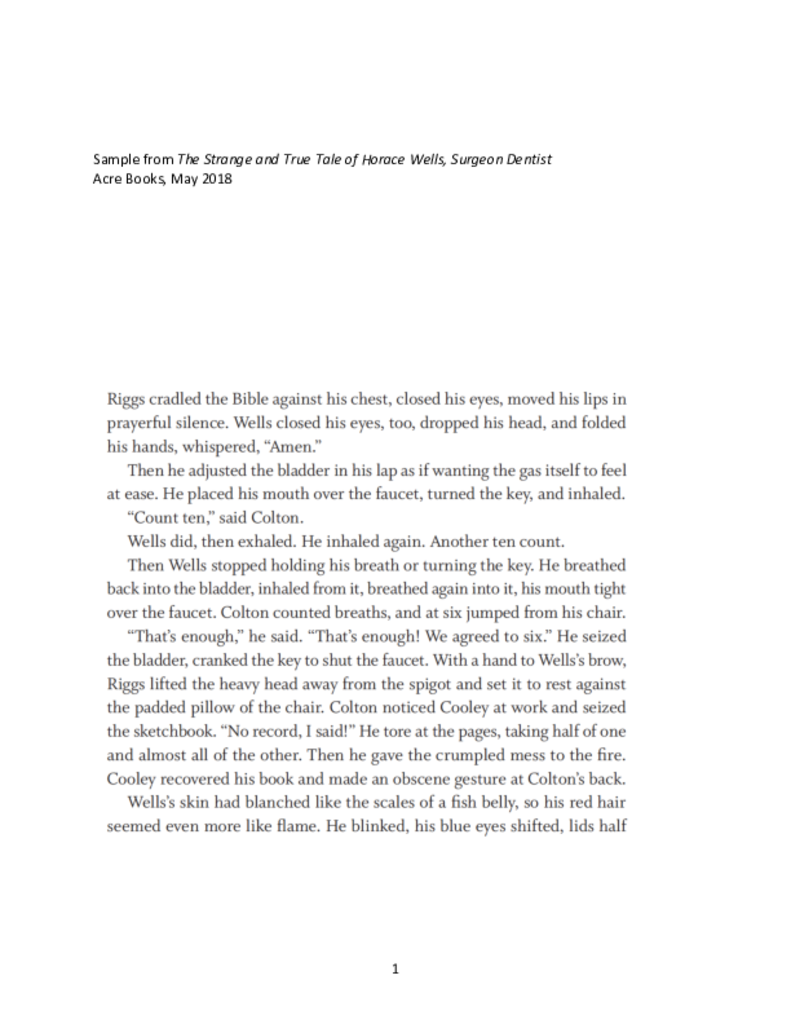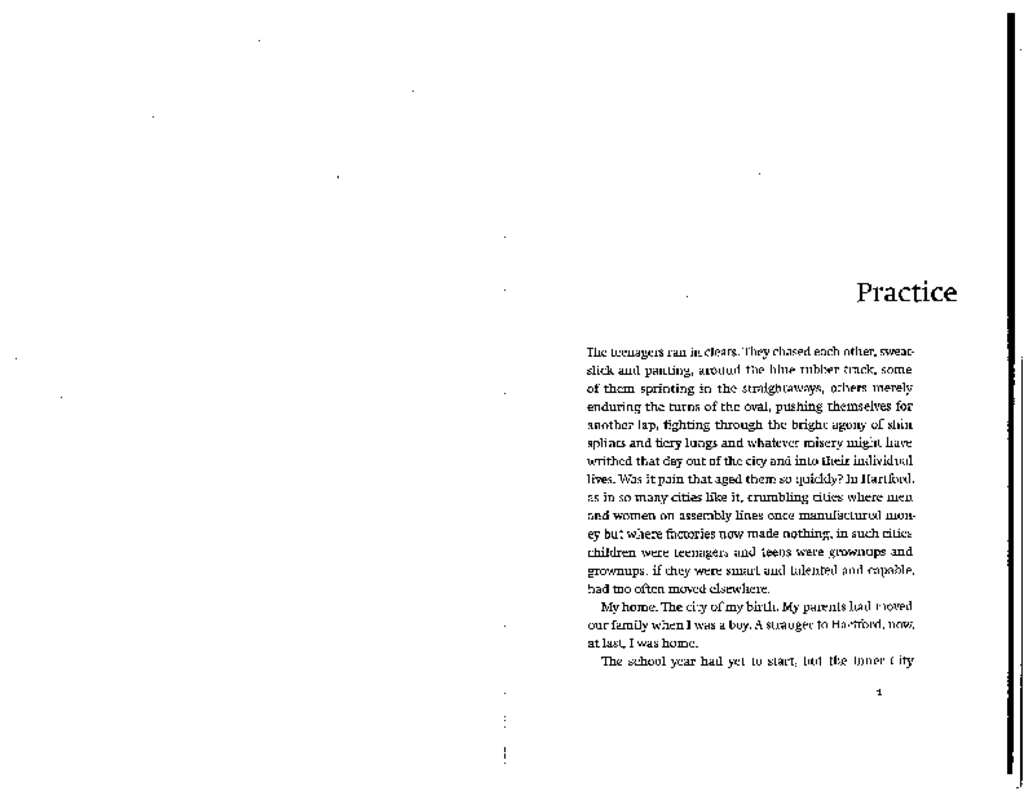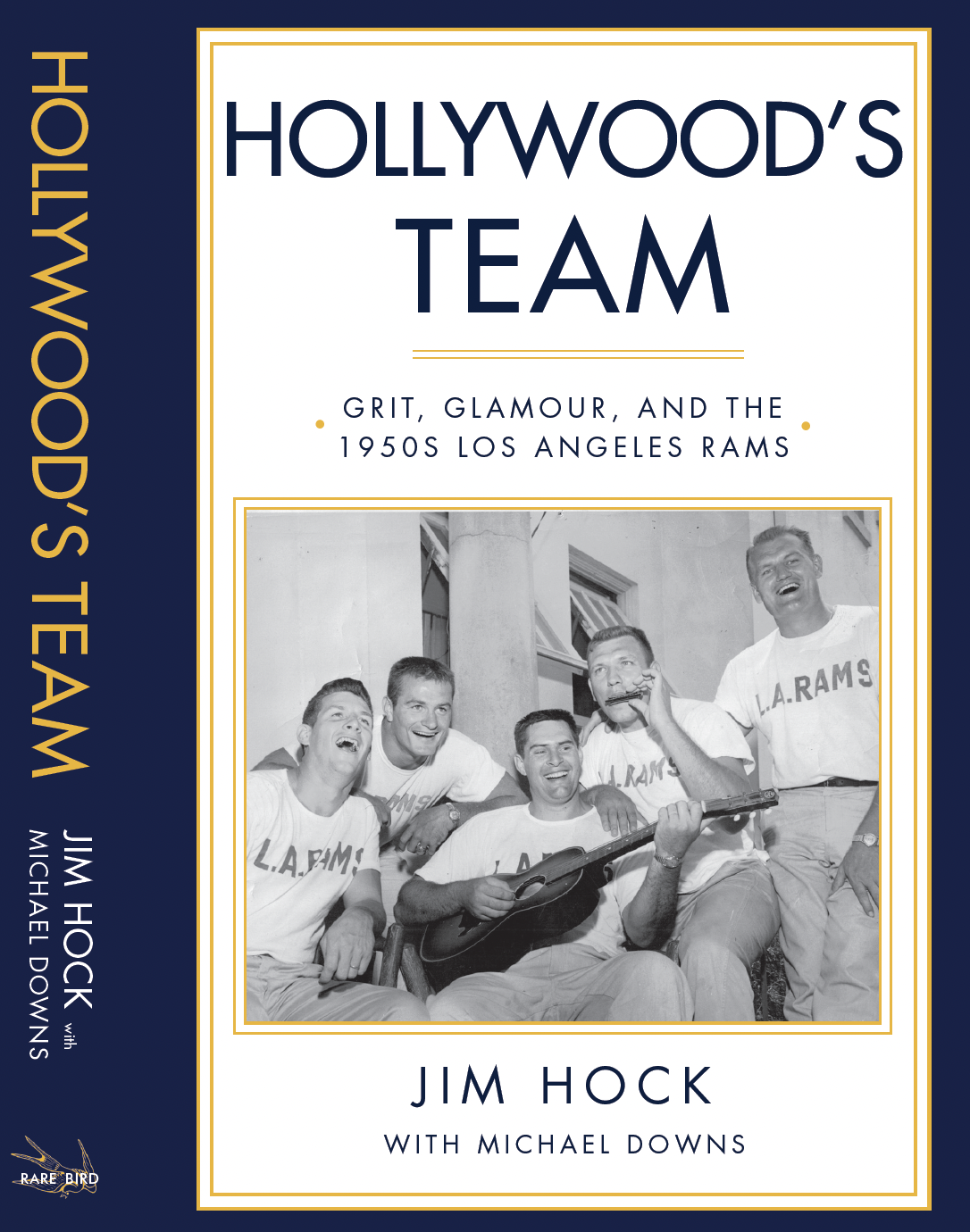Work samples
-
answer excerpt baker.pdf
That time when a member of the Velvet Underground talked me down from my horror after I'd read Lord of the Flies.
The morning when federal agents parked unmarked SUVs on my Baltimore street and took away my neighbor.
How serving as officiant at a friend's wedding caused me to dive deeply into my own ideas about God.
How visiting Clyde, Ohio, the boyhood home of famous author Sherwood Anderson, taught me about the conflicts between expectation and reality.
These and other literary nonfiction essays make up the starting point of a memoir-in-essays, with the working title "Answer When You Can." That title comes from an essay, published in The Southern Review in January 2023 and later winner of the Oran Robert Perry Burke Prize, in which I chase the origin of a letter never meant for me that nonetheless came into my life and changed it. That essay's opening appears in the image above. I invite you to click on it to read an excerpt.
-
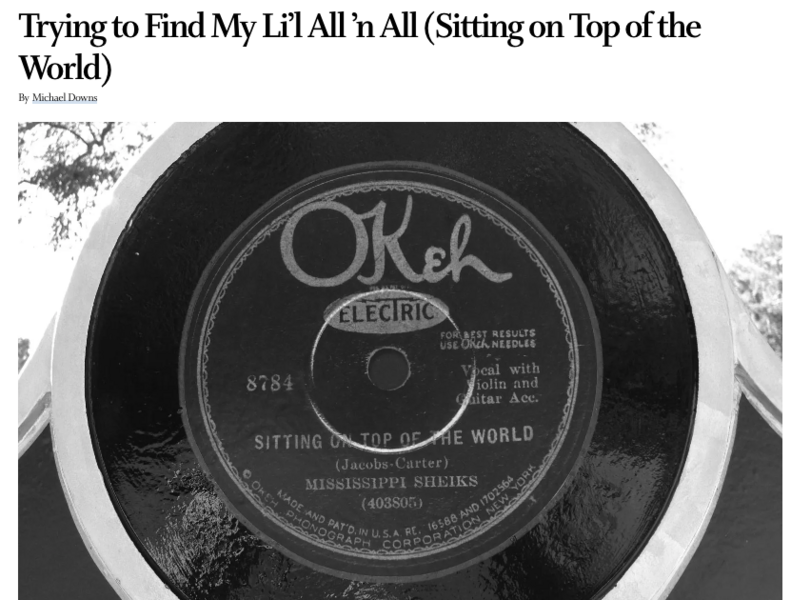 Now She's Gone, I Don't Worry: a song biography of "Sitting on Top of the World"
Now She's Gone, I Don't Worry: a song biography of "Sitting on Top of the World""What kind of song is that?" asked Lonnie Chatmon, fiddler for the Mississippi Sheiks, that moment in 1929 after his partner, Walter Vinson, played him a tune he'd just written.
One answer? “Sitting on Top of the World,” first recorded in 1930 by the Sheiks, is a shapeshifter, having been performed or recorded hundreds of times in everything from jazz to bluegrass to Texas swing, folk, and rock and gospel. In that way it's a deeply American song, one that migrates across genres, regions, and race, and meaning.What kind of song? One that for decades has held me with an inexplicable grip. One that led me to a literary memoir-essay in The Georgia Review, which in turn led me to my newest and ongoing book project: to write a song biography and tell the tale of this amazing, transcendent work of American art.
To read the essay, please see "Now She's Gone, I Don't Worry" under projects. -
YesterdayYears: short stories based on Polish legends
The Dragon under Wawel Castle; the dwarves of the Orange Revolution; pigeons who were once medieval knights; the gagged woman who haunted a king; Wojtek the Bear who fought the Axis ...
For 10 months as a Fulbright scholar in Kraków, Poland, I studied that ancient country's legends. What I wanted was to quiet the noise of the contemporary American literary scene and remind myself about primeval, essential aspects of storytelling. Our common culture's older stories–Greek myths, Biblical tales, Wild West legends–had become too familiar to shake up my understanding of fiction. But these distinctly Polish legends were new to me. This defamiliarization, combined with intense cultural study in one of the world's most literary cities, has led me to a whole new fiction-writing approach.
-
 Isn't It Fun How We Shine: A podcast of flash nonfiction
Isn't It Fun How We Shine: A podcast of flash nonfictionISN'T IT FUN HOW WE SHINE is a podcast about a neighborhood in Baltimore City's Westfield area during the Great Recession. Written as bits of flash nonfiction and interspersed with interviews and behind-the-scenes reveals, the podcast will chronicle the struggles of neighbors during an international crisis they can't control. Tender and often funny, these vignettes shape several narratives as people work to keep their neighborhood intact. A woman will go door-to-door asking for loans to pay her mortgage. A fellow with a chronic illness will give his house back to the bank. But also a man will break in through a second-floor window to rescue a dead neighbor's trapped cats. And a retiree will make a memorable cameo doing the hokey-pokey in a John Waters film.
Excerpts of the podcast's writing have been published in a variety of literary journals and been recognized as notable in Best American Essays. I invite you to visit "Isn't It Fun How We Shine" under projects to read examples of the flash nonfiction and to listen to audio.
The manuscript takes its title from graffiti spray-painted on a neighborhood dumpster: "Do Not Stop / Isn't it Fun How We Shine." The podcast is currently in production, made in collaboration with Dr. Jeremy Wexler, a musician and composer. The project began with assistance from a Rubys grant funded by the Robert W. Deutsch Foundation.
About Michael

I am a literary artist, working in fiction and nonfiction. Though I've lived all over the country, I've called Baltimore home since 2007, living first in the city and for the last two years just across the city line in Baltimore County.
I've authored three books and published individual stories and essays in some of the country's top literary journals including Kenyon Review, Ploughshares, Missouri Review, Southern Review, and Georgia Review. A one-time newspaper reporter, I shifted… more
FICTION: The Strange and True Tale of Horace Wells, Surgeon Dentist: A Novel
This novel, published by Acre Books in May 2018, reimagines the life of Horace Wells, a Connecticut dentist and anesthesia pioneer. Its first chapters received a grant from the Maryland State Arts Council. It was a finalist for the Foreword Book of the Year in Historical Fiction. The Los Angeles Review of Books called it "hypnotic" and "a fascinating story."
In December 1844, Wells encountered nitrous oxide, or laughing gas—then an entertainment for performers in carnival-like theatrical acts—and began administering the gas as the first true anesthetic. His discovery would change the world, reshaping medicine and humanity’s relationship with pain.
But that discovery would also thrust Wells into scandals that threatened his reputation, his family, and his sanity—hardships and triumphs that resonate in today’s opioid epidemic and our ongoing grappling with what hurts us and what we take to stop the hurt.
-
 A tool of 19th-century dentistry for the coverThe cover of THE STRANGE AND TRUE TALE OF HORACE WELLS, SURGEON DENTIST: A NOVEL, designed by Barbara Neely Bourgoyne and published by Acre Books, May 2018.
A tool of 19th-century dentistry for the coverThe cover of THE STRANGE AND TRUE TALE OF HORACE WELLS, SURGEON DENTIST: A NOVEL, designed by Barbara Neely Bourgoyne and published by Acre Books, May 2018. -
The Strange and True Tale of Horace Wells, Surgeon DentistThis video serves as a book trailer for my novel, The Strange and True Tale of Horace Wells, Surgeon Dentist. The film was shot and edited by David Grossbach. The script and narration are mine. (I also served as camera and prop assistant)
FICTION: The Greatest Show
THE GREATEST SHOW: STORIES, a collection of ten linked short stories published by Louisiana State University Press. Three of the stories received special commendation in the Best American Short Stories series as "distinguished stories."
THE BOOK
Fire sweeps along the wall of a circus tent while inside thousands of people enjoy a Ringling Brothers and Barnum and Bailey matinee. Within minutes, flames consume the canvas and vast sections collapse, killing 168 people and injuring hundreds more.
Inspired by the 1944 Hartford Circus Fire, the interconnected stories in Michael Downs's The Greatest Show explore how kindness and time work in the aftermath of disaster.
NONFICTION: House of Good Hope: A Promise for a Broken City
HOUSE OF GOOD HOPE: A PROMISE FOR A BROKEN CITY combines reportage and memoir to tells the true story of five young men who met as high school athletes and who as a group pledged their lives to Hartford, Connecticut, promising to bring college degrees home and to live and work in their broken city. It won the River Teeth Prize for Literary Nonfiction and was a finalist for both the Saroyan Prize and the Connecticut Book Award in Biography and Memoir. It was published by the University of Nebraska Press.
The stories of the young protagonists involve murder, love, sacrifice, success at the highest levels of college football, marriage, birth and death, a beating at the hands of police, a drug-sting that fells a high school coach, and a final reunion of friends who have learned how hard it is to simultaneously love their city and live for the future. The book also traces the life of the author’s family through four generations as they live in and leave Hartford, abandoning the author’s ailing grandparents to a city that shows little mercy. The book explores essential questions: What happens to those we leave behind? How do we make peace with the past we have sacrificed? How do we make peace with ourselves when we can no longer help the places – the Hartfords – that we once called home?
Menckeniana: cultural criticism involving H.L. Mencken
My interest in the Sage of Baltimore, H.L. Mencken, confuses even me. I owe him nothing. I only started to read his work in the last few years. Though I've lived in Baltimore–his lifelong home as a columnist and editor for the Baltimore Sun–and though I've worked as a newspaper journalist, Mencken was not part of my life until 2021 when the Pratt Library invited me to give the annual Mencken Memorial Lecture.
Since then, I've continued my engagement with Mencken–once called the most powerful private person in the United States–by writing about him for both Baltimore Magazine and the Los Angeles Review of Books. What keeps me coming back to this iconoclast, admired for his skepticism and wit yet excoriated for racist and anti-Semitic writings? Maybe this. That to read Mencken is to wrestle with the United States and American culture–and not just as it was in the 1920s and '30s when Mencken was in his prime.
To wrestle with Mencken is to wrestle with the country and the culture as it is today.
-
Mencken Memorial Lecture, 2021
In 2021, when I gave the Mencken Memorial Lecture at the Enoch Pratt Free Library, it was to a nearly empty room: just a few friends in masks. But the lecture also went out to several hundred others who watched the video live-streamed on Facebook. In the talk, titled "The Babelobabuli: Notes on Mencken and Today's Muddled Topography of Literary Journals," I considered what Mencken suggests to us as readers and writers about navigating the thousands of literary journals published today online and in print. I quoted Mencken, saying that "good work is always done in the middle ground, between the theories," a line that explains our time when writers are more than ever working in a wide-open literary landscape, one that allows for the creation of new and exciting work.
The talk was later published as an essay in "Menckeniana: A magazine about all things Mencken."
The talk itself begins at the 2:30 mark in the video.
-
 Menckeniana cover
Menckeniana coverThe Fall 2022 issue of Menckeniana, No. 227, was the last to be published by the Enoch Pratt Free Library. It also included my essay, "The Babelobabuli," based on my talk given for the 2021 Mencken Memorial Day Lecture.
-
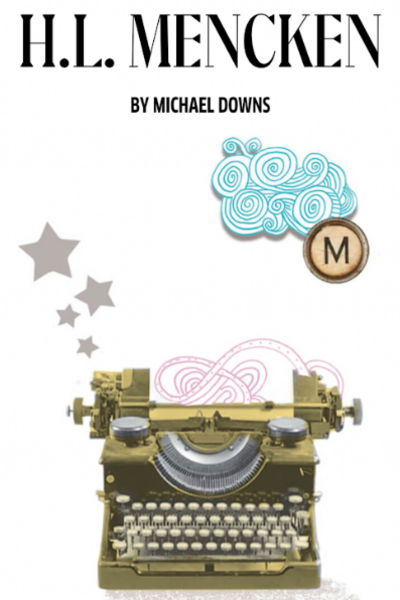 Baltimore Magazine and Mencken
Baltimore Magazine and MenckenBaltimore Magazine published "The City that Writes," short features on 13 dead Baltimore writers, written by 13 living ones. The magazine asked me to write about H.L. Mencken, the curmudgeonly Sage of Baltimore.
-
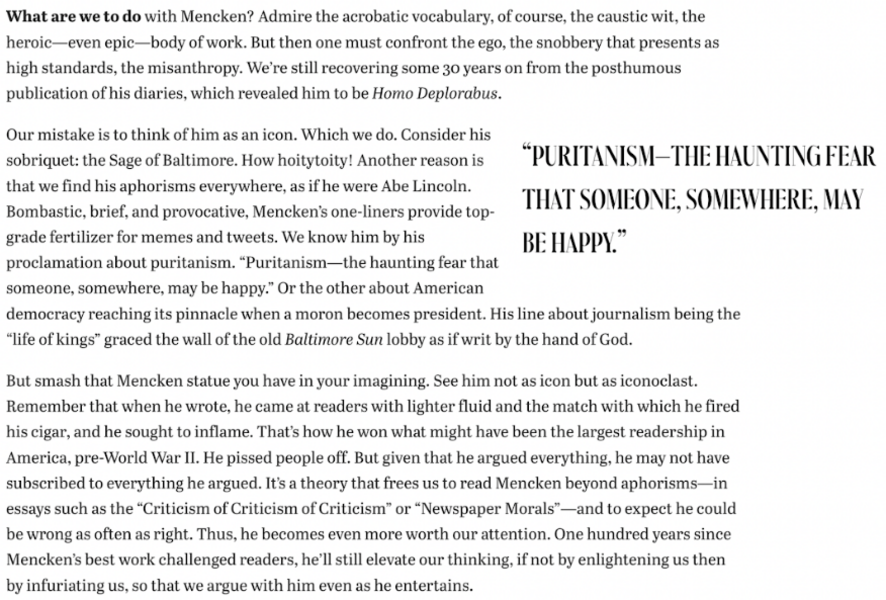 Baltimore magazine: What are we to do with Mencken?
Baltimore magazine: What are we to do with Mencken?"What are we to do with Mencken?" became the question that fueled my writing about him for Baltimore Magazine, and which continues to fuel my interest in H.L. Mencken, an important and controversial figure in his time and now.
-
 Los Angeles Review of Books
Los Angeles Review of BooksThe Los Angeles Review of Books is scheduled to publish my 3,700-word essay on Mencken on his birthday this year, January 29. "The Last of the Menckenians" considers the dwindling numbers of the Mencken Society and explores Mencken's value in today's literary culture.
From the essay:
"Aficionados don't read Mencken because they expect to agree with him. They read him for the adrenaline jolt. That jolt hits because Mencken delivers scorn with wit and reason. He vivifies his 21st-century fans as he has ever done for readers. 'He calls you a swine, and an imbecile,' wrote critic Walter Lippmann in 1926, 'and he increases your will to live.' "
Book publications: fiction and nonfiction
My three books show a range of subject and genre.
First came HOUSE OF GOOD HOPE: A PROMISE FOR A BROKEN CITY, which combined literary journalism and memoir to tell the story of five young men who pledged their lives to their troubled hometown, which was also my hometown.
Then: THE GREATEST SHOW: STORIES, a collection of linked short stories using fiction to explore the repercussions of the very real and historic 1944 fire that engulfed a circus tent and killed 168 people of the thousands who attended that day's performance.
Finally, a novel: THE STRANGE AND TRUE TALE OF HORACE WELLS, SURGEON DENTIST, which mined the gaps in the historical record to imagine the motivations and mysteries behind the troubled life of the man who discovered anesthesia.
Yet the books also share commonalities: A concern with community, in-depth research, a fascination with history and what it reveals about us now, and affection for people both real and imagined.
"... a marvelously talented writer."
– Foreword magazine
-
 The Strange and True Tale of Horace Wells, Surgeon Dentist
The Strange and True Tale of Horace Wells, Surgeon DentistMoving through 19th-century New England to Paris and back again, THE STRANGE AND TRUE TALE OF HORACE WELLS, SURGEON DENTIST imagines the sacrifices and struggles of the man widely credited with discovering anesthesia. It is a love story but also a story of what love can't redeem: of narcotic dreams and waking insanity; of pain's destruction and what pains can never be eased. A novel that resonates with our contemporary struggles involving pain and the substances that numb it.
Finalist, historical ficiton, Foreword INDIES Book of the Year Award; Finalist for the Phillip H. McMath Post-Publication Award for the Novel.
"Downs tells a fascinating story in skilled, often elegant prose, and he treats all his characters with great sympathy." – Los Angeles Review of Books
Available for Purchase -
excerpt: The Strange and True Tale of Horace Wells
In this excerpt, Horace Wells subjects himself to nitrous oxide while his tooth is pulled, a moment that introduced anesthesia and changed the world.
Available for Purchase -
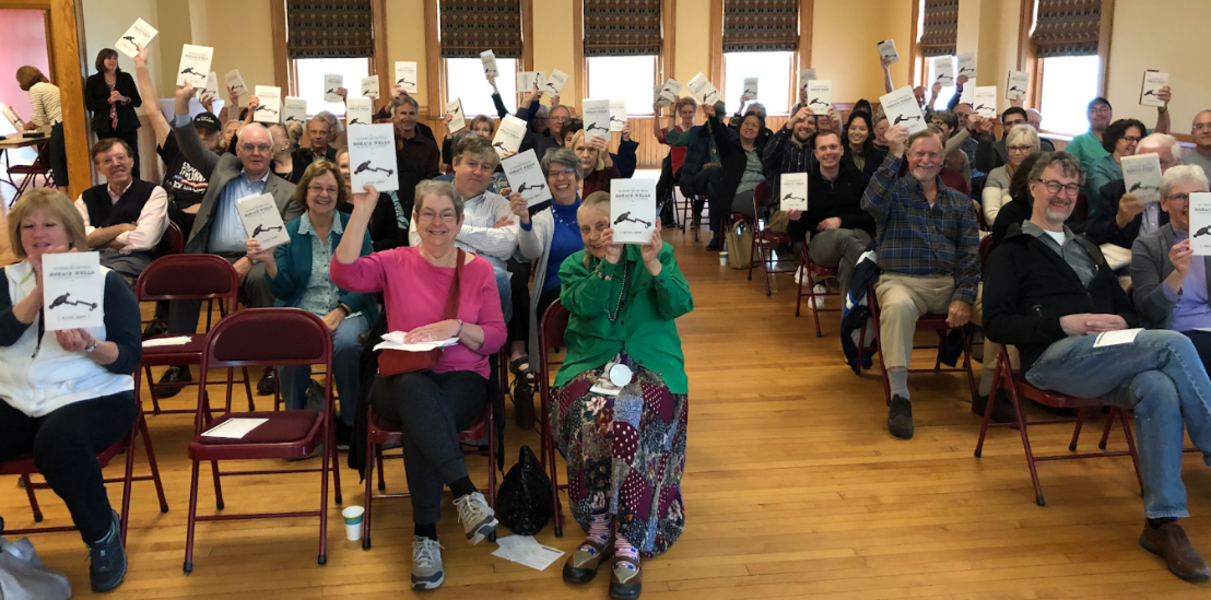 with readers of The Strange and True Tale of Horace Wells
with readers of The Strange and True Tale of Horace WellsA foundation invited me to Connecticut where Horace Wells lived to read from the book and answer questions from these lovely people.
-
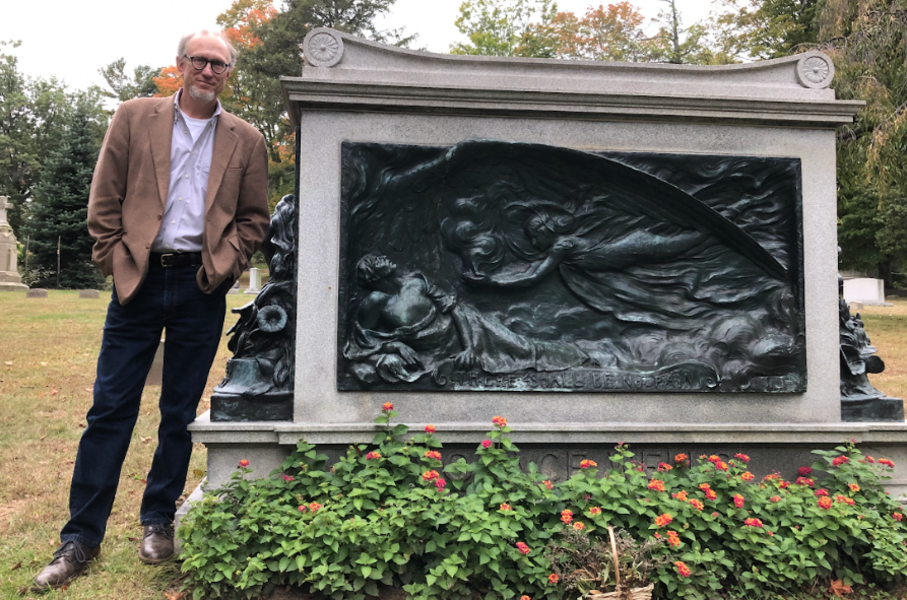 At the grave of Horace Wells and his family
At the grave of Horace Wells and his familyResearch is central to my work – even my fiction writing. That research includes books and the internet but goes far beyond those. For example, to better understand my subject in the Horace Wells novel, I spent time in Hartford, CT, visiting places where he lived and worked, examining his daybook and holding his death mask, and spending time at the Cedar Hill cemetery where he and his family are buried. I even asked my dentist, who needed to fill a cavity for me, if he would give me nitrous oxide, the gas that Horace Wells used to first experiment with anesthesia, so I could better understand its effects.
-
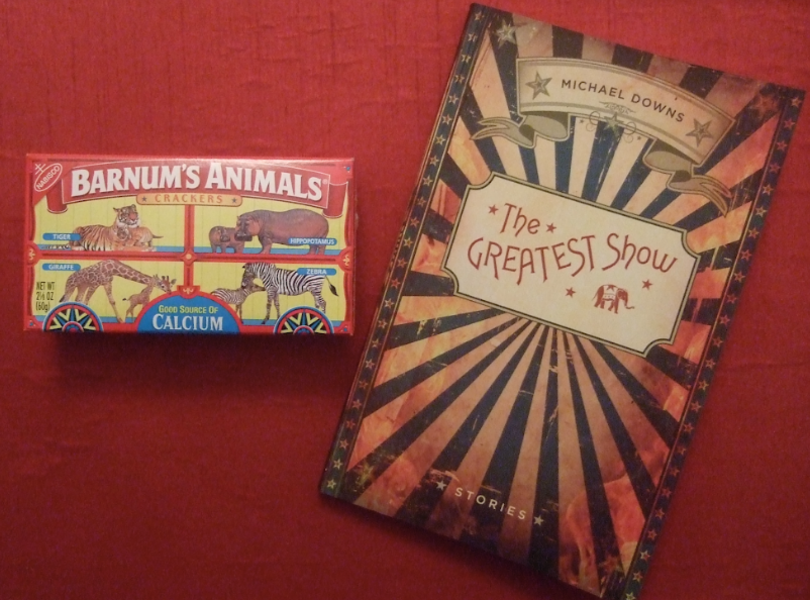 The Greatest Show: Stories
The Greatest Show: StoriesInspired by the true-life Hartford Circus Fire of 1944, this collection of ten linked stories explores the way disaster reshapes a community over decades. Stories from THE GREATEST SHOW appeared in The Georgia Review, The Missouri Review, the Kenyon Review, Gettysburg Review, and other journals. Three of the stories were recognized as distinguished in the Best American Short Stories series.
A finalist for the Paterson Prize in Fiction.
Foreword magazine: ''an auspicious fiction debut from a marvelously talented writer"
The Rumpus: "intricately woven"
Shenandoah Review: "beautifully written. Not a word out of place."
West Branch Wired: "These are quiet stories, in the tradition of Winesburg, Ohio, ... [with] the dramatic weight and complexity of a novel."
Colorado Review: "gorgeously captures the sweep of ordinary lives made remarkable by a tragic twist of fate."Available for Purchase -
Ania: a short story
This story, originally published in The Georgia Review, opens the collection, THE GREATEST SHOW. It tells the story of an immigrant housekeeper in Hartford, Connecticut, who steals tickets from her employer so she can take her son to the circus and who is therefore confronted with one of the worst fire disasters in American history.
"Ania" received recognition as notable in the Best American Short Stories series. It was the manuscript I entered when I won a literature fellowship from the National Endowment for the Arts.
-
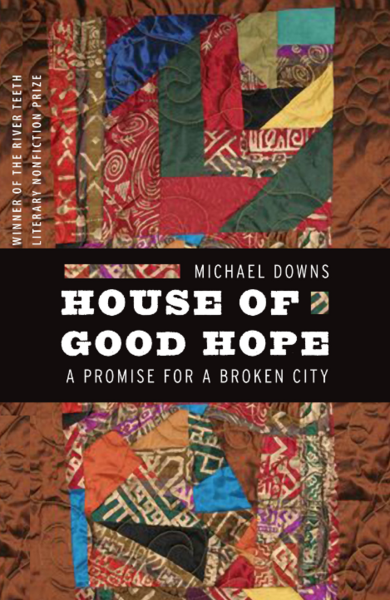 House of Good Hope: A Promise for a Broken City
House of Good Hope: A Promise for a Broken CityHOUSE OF GOOD HOPE: A PROMISE FOR A BROKEN CITY combines reportage and memoir to tells the true story of five remarkable and talented young men from Hartford, Connecticut, who pledge their lives to their hometown and who find that promise not always easy to keep.
Winner: River Teeth Prize for Literary Nonfiction
Finalist: Connecticut Book Award in Biography and Memoir.
The cover for HOUSE OF GOOD HOPE: A PROMISE FOR A BROKEN CITY, is detail from a quilt called "All that Amazing Jazz," by Hartford, Connecticut, quilt artist Ed Johnetta Miller. Photo by John Ryan.Available for Purchase -
excerpt: House of Good Hope
An excerpt featuring the opening pages of HOUSE OF GOOD HOPE.
"... a beautiful book, filled with the poignant bittersweet of hope and loss." – Buzz Bissinger, author of Friday Night Lights
Publishers Weekly: Combining a reporter's eye for detail, the breathless narrative rush of an action movie and the generous heart of a hometown boy desperately trying to make sense of a place gone terribly wrong, Downs examines the social and economic disintegration of Hartford, Conn., in the 1990s through the coming-of-age of five African-American teenage boys.
The Hartford Courant: "... a lavish love letter to Connecticut’s capital city." -
 Hollywood''s Team: a collaboration
Hollywood''s Team: a collaborationSelected by the Athletic sports journalism site as the one book to read about the Los Angeles Rams, HOLLYWOOD's TEAM is part history of Los Angeles, the NFL, and also part biography. It was a pleasure to assist author Jim Hock in his work to tell the story of his father, an offensive lineman who played for the Rams in the early 1950s.
"A winning new book..." – David Davis, LAObserved



